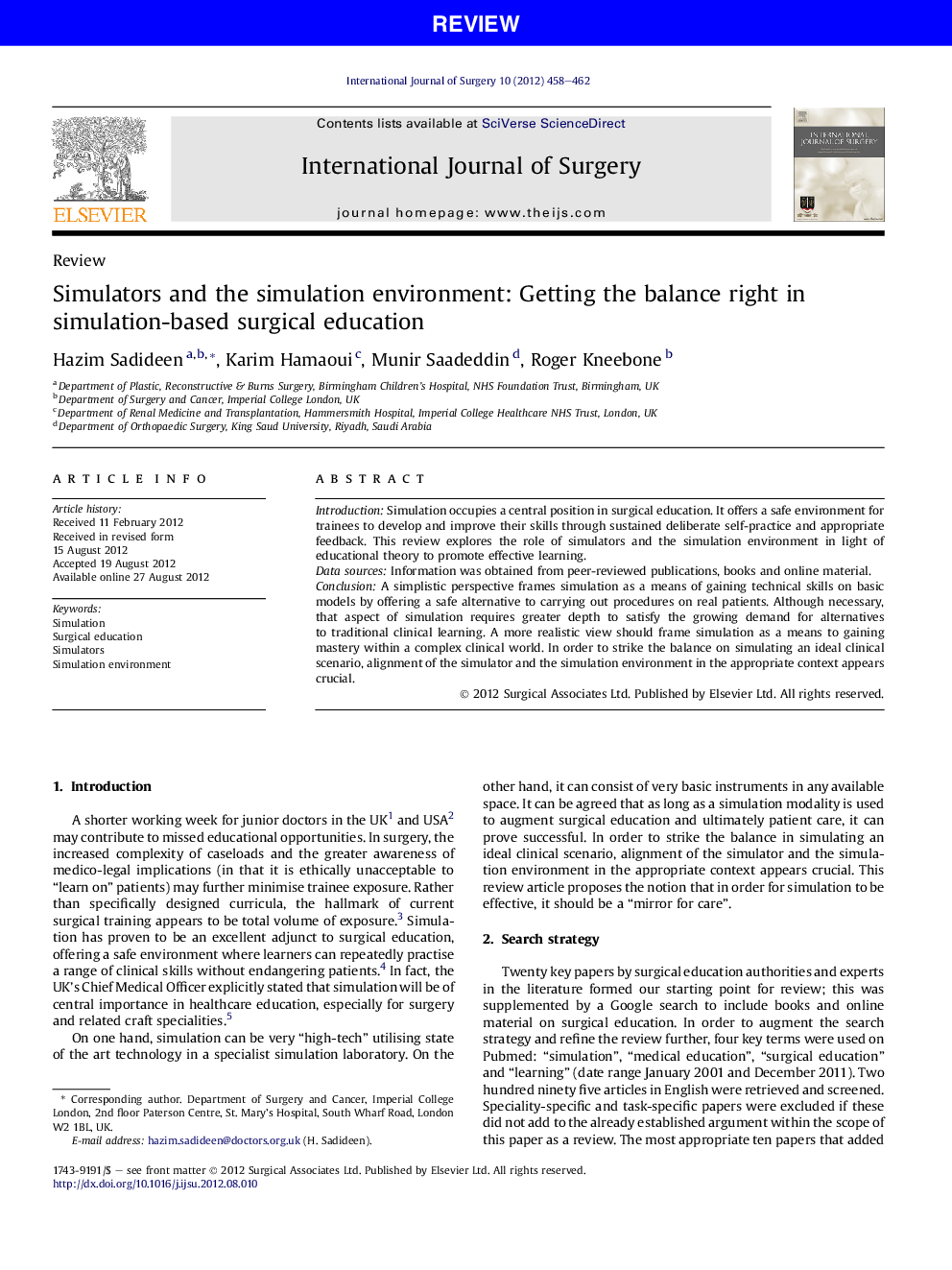| Article ID | Journal | Published Year | Pages | File Type |
|---|---|---|---|---|
| 4286911 | International Journal of Surgery | 2012 | 5 Pages |
IntroductionSimulation occupies a central position in surgical education. It offers a safe environment for trainees to develop and improve their skills through sustained deliberate self-practice and appropriate feedback. This review explores the role of simulators and the simulation environment in light of educational theory to promote effective learning.Data sourcesInformation was obtained from peer-reviewed publications, books and online material.ConclusionA simplistic perspective frames simulation as a means of gaining technical skills on basic models by offering a safe alternative to carrying out procedures on real patients. Although necessary, that aspect of simulation requires greater depth to satisfy the growing demand for alternatives to traditional clinical learning. A more realistic view should frame simulation as a means to gaining mastery within a complex clinical world. In order to strike the balance on simulating an ideal clinical scenario, alignment of the simulator and the simulation environment in the appropriate context appears crucial.
